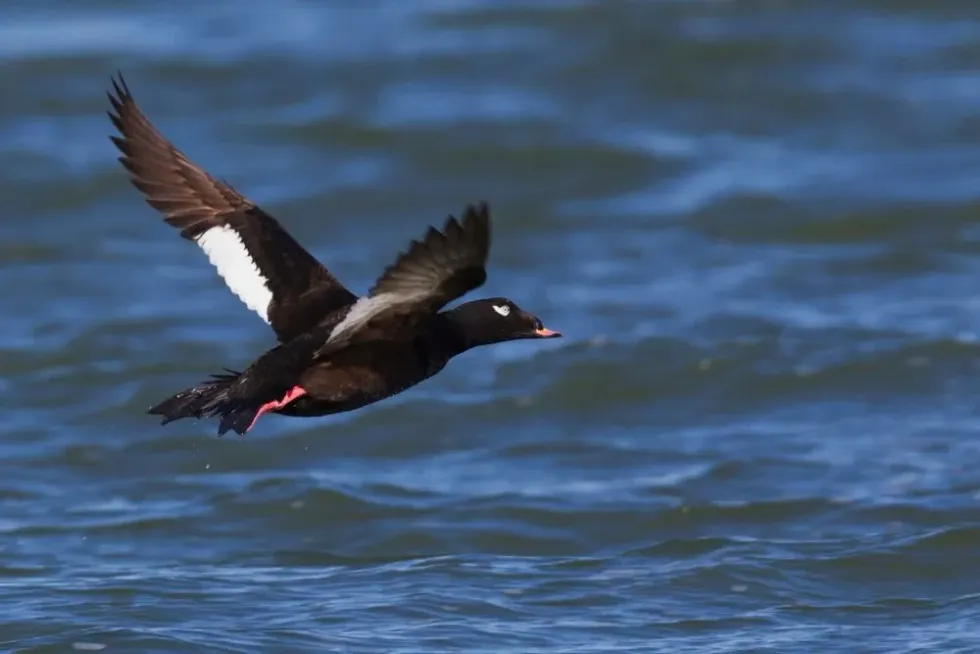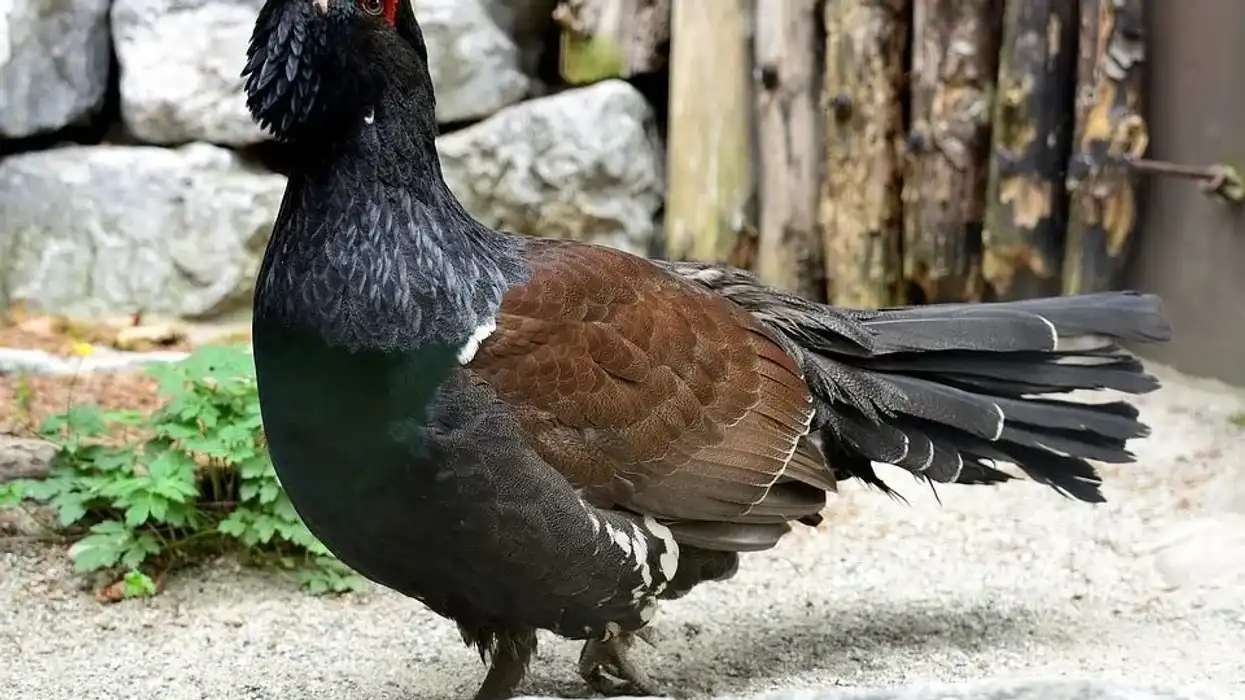White-winged scoter (Melanitta deglandi) is a North American scoter species of sea duck among the three natives of North America. The scoter white-winged is the largest of the three scoters found over there. They are seabirds.
The biggest threat of the scoter white-winged is the change in climate as that affects and reshapes the ducks' range. For example, their range map is lost by 64% in the summer season, and the range map is gained only by 14%.
Whereas, in the winter season, it is extended by 101% in range and the lost range is only by 18% in total. This is how climate change reshapes their range map.
That is why they perform migration every year in winter and rarely in the summer season.
During the migration period, the birds take the flight to the coastal freshwater bays to the other end of North America, particularly to Mexico. Usually, male white scoters and ducks perform the migration process, whereas female scoters stay with the family on the breeding nest.
If you enjoy reading this article, check out these Old World flycatcher facts and the Laysan duck facts for more.
White-Winged Scoter Interesting Facts
What type of animal is white-winged scoter?
The scoter white-winged is a North American sea duck species.
What class of animal does white-winged scoter belong to?
The white-winged scoter (Melanitta) belongs to the class of Aves.
How many white-winged scoters are there in the world?
The population of the winged scoter white is not estimated yet, but it is stable. This is because these birds' family is listed as Least Concern ducks by the IUCN Red List.
Where does white-winged scoter live?
The white-winged scoter is a North American bird species found in the north of Canada and the great lakes during winter. During migration, these birds are known to move from north to south, mainly in Mexico.
What is a white-winged scoter habitat?
White-winged scoter birds are the North American sea ducks found in the coastal waters, slow-moving rivers, and underwater.
Who does white-winged scoter live with?
The white-winged scoter, much like the velvet scoter (Melanitta fusca), is found living with the same species of sea ducks or with flocks of other ducks species. The group of scoters is known as flocks.
How long does white-winged scoter live?
Although the average lifespan of adult winged scoters is around four to five years, the oldest one lived for 18 years.
How do they reproduce?
For the breeding process, the adult white-winged builds its breeding nest close to the sea, in the land. The nest is mostly close to the other species.
After the breeding process is done, the female lays 5-11 eggs in the nest, takes care of them for the first three weeks of their birth, and abandons them. The reason for their abandonment is that these creatures learn to fly and can complete their diet on their own till the age of three weeks.
What is their conservation status?
The conservation status of these birds, the largest of the three ducks in America, is listed as Least Concern by the IUCN Red List. Their population is currently in a stable condition, and they are very unlikely to be on the list of Endangered species anytime soon.
White-Winged Scoter Fun Facts
What does white-winged scoter look like?
The adult male and female have dark black flight wings with white patches on them. The bill is in dark black on the knob at the base, but the tip of the bill is orange.
Both the male and female have a bill that is similar in color. Males have orange and red feet, but the females' feet are not in red.
How cute are they?
Both male and female white-winged birds are very cute and adorable species. Both the adult males and females birds have dark-colored wings, and the wings are quite attractive to look at.
These birds are easy to recognize from afar as they are the largest of the three scooters, and almost all the other adult ducks that are found are white in color, irrespective of whether they are males or females. These ducks have dark wings, which help distinguish them.
How do they communicate?
Scoters produce a wide range of vocalizations to communicate with each other. Some of the famous vocal calls of the white-winged scooters are the high-pitched calls and whistles and a low 'kaak kaak' sound which is quite gravelly when heard. Mostly, females scooters produce these low 'kaak' sounds during the breeding and nesting period.
How big is the white-winged scoter?
The size of white-winged scoters is around 19-24 in (48-60.9 cm) long. Thus, they are ten times larger than aquatic insects. They are similar in size to the velvet scoter (Melanitta fusca).
How fast can a white-winged scoter fly?
The actual speed of white-winged scoters is not known, but they are known to take a good flight.
How much does white-winged scoter weigh?
The weight of white-winged scoters is around 2-4.6 lb (0.95-2.1 kg).
What are the males and females names of the species?
There are no specific names for the males and females of the North American species of white-winged scoters.
What would you call a baby white-winged scoter?
The young babies of the white-winged scoter, Melanitta fusca, and other scoters are known as ducklings.
What do they eat?
The diet of adult white-winged birds contains mollusks, aquatic insects, small fishes, and plant materials.
Are they dangerous?
No, the dark-winged scoter is not dangerous at all. These birds mind their own business and do not disturb others. Unlike gannet sea birds like the northern gannet, the white-winged scooter is mostly found silent in the water and does not fight for food and insects with the other birds.
Would they make a good pet?
No, the dark-winged birds cannot be a good pet as they cannot live indoors, away from water. The other reason that makes them unsatisfactory pets to a human is that they feed on live marine insects and fishes. They are migratory birds migrating every year and come back only in the breeding and winter seasons.
Did you know...
All three species of scoters of America used to be combined as one and were separated in the year 2019.
All the species of scoters are dark in color, and this feature differentiates them from the common duck species. Usually, males and females of scoters are easy to distinguish as males are black in color while females are found in gray or brown.
However, both sexes of the white-winged are quite similar in color, which makes it difficult to distinguish between the two sexes.
When do young ones of white-winged scoter fly?
The young white-winged scoter starts to take flight 63-77 days after their birth. When young scooters are three weeks old, they are abandoned by their parents as they are quite old enough to survive on their own, away from their parents.
Where does white-winged scoter migrate in winter?
The scoters' migration period is in the winter season, and they migrate to the coasts or towards the great lakes in Canada. These birds are also found in parts of Mexico during the winter season. This indicates that they also migrate to Mexico sometimes.
Here at Kidadl, we have carefully created lots of interesting family-friendly animal facts for everyone to discover! For more relatable content, check out these surf scoter facts and harlequin duck facts pages.
You can even occupy yourself at home by coloring in one of our free printable white-winged scoter coloring pages.










